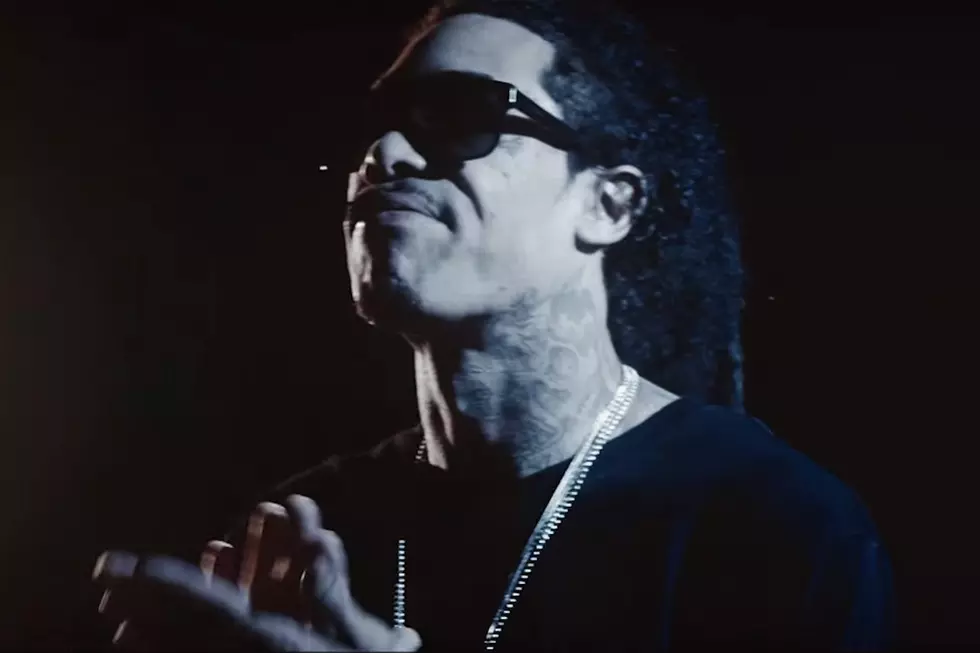WorldStarHipHop’s ‘The Field: Miami’ Documentary Explores The City’s Projects
"You haven't been to Miami. You've been to South Beach, but you've never been to Miami."
Trick Daddy delivers those opening words at the beginning of WorldStarHipHop's new documentary, The Field: Miami, the second in its new documentary series examining the cross section between inner city violence and hip-hop. Following the first edition, which focused on Chicago's rocky south side, Miami takes a wider view of the problems facing the city, zeroing in on different neighborhoods and highlighting the issues that each section faces rather than setting its sights on just one issue.
Or at least, that's what it very much wants to do; despite spending time in Overtown, Opa Locka, North Miami, Liberty City, Carol City and Lil Haiti, giving a platform to the diverse artists that are spilling out of each area, the documentary still seems fairly one-sided. There's a complete absence of any female presence, for one, while Miami's famously large Cuban population is relegated to a throwaway comment disparaging the Cuban refugee community for receiving U.S. government aid, whereas Haitian refugees are detained and returned when attempting to flee to American soil. It's a valid point, but lacking any counterpoint it comes off more as a cheap shot aimed at a community which is facing similar hardships, but which the documentary ignores.
The most immediate takeaway from the film is that the issues facing Miami are strikingly similar to those outlined by the community members of Chicago—a point which WorldStar will probably continue to focus on in future The Field installments, the next of which is supposedly Memphis—older hustlers in the community, involved in both the drug game and in giving back to the community, were locked up in a police sweep, destroying the structure of the drug game and leaving it open to violence and murder. Trick Daddy and Uncle Luke both point to the Arthur McDuffie riots in the early 1980s as a turning point as well, where the communities turned against not only the police but each other, wreaking havoc in the school systems. Overtown MC YD, riding his bike through his section of town, would periodically point to a corner or a section of road where a friend was murdered; Dred Skeezy, a rapper from North Miami, stood on the spot where his big homie was murdered at point blank range 12 years prior, pointing out the bullet holes that still leave marks in the pavement.
But the biggest lesson the film portrays is the disconnect between the perception of Miami—the glitz and glam of South Beach, the lights and liquor of Club LIV—and the reality of the situations of Carol City and Opa Locka, among others. "Natives of Miami, when LeBron James said, 'I'm taking my talents to South Beach,' they hated that," Uncle Luke explains at one point. "'Cause that ain't us." Instead, it's the local strip clubs that alone promote local Miami hip-hop, and dance crazes such as the Bobble Walk, introduced by Lil Haiti native Yung Gordon, still thrive in the streets and bowling alleys of Miami's forgotten neighborhoods. MMG rapper Gunplay, sitting in a chair in the courtyard of his Carol City projects, helps explain the struggle for balance that led him from his status as one of Miami's best rappers to prison and house arrest on drug charges to getting himself back together to contribute to Rick Ross' Maybach Music empire.
The whole documentary is more of a look at the issues facing Miami through the eyes of local rappers than it is an examination of the local Miami hip-hop scene; there are bits and pieces on local DJs and the struggles of local radio stations to break stars, but no real in-depth look at the why or the how or the growth of the hip-hop community. Instead, it's a peek into the lives of local rappers in their own neighborhoods, and in that way seems more like a series of smaller documentaries stitched together rather than anything totally comprehensive.
And maybe that was the goal all along. There's still plenty to learn, and the best parts of the documentary are when the storylines are stripped away and the local rappers—YD and Skeezy, Busta Free and Young Quay, Denzel Curry and N3ll—are allowed to spit their game unedited for the cameras. The diversity in the local scene is wide; you just wish the documentary would explore it further. —Dan Rys
Previously: Chicago Gets Shine In Two New Documentaries, Chiraq And The Field
Russell Simmons Wants To Make A Movie About WorldStarHipHop
More From XXL









